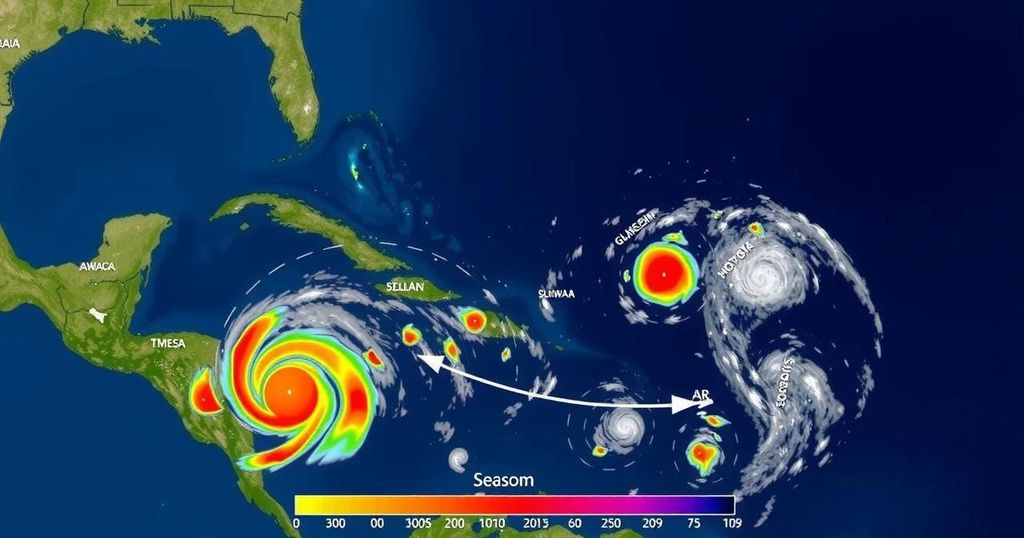2024 Atlantic Hurricane Season: A Record-Breaking Year of Storm Activity
The 2024 Atlantic hurricane season, ending on November 30, exhibited above-average activity with 18 named storms, 11 hurricanes, and five major hurricanes. Major storms like Beryl, Helene, and Milton brought significant impacts and catastrophic effects across various regions. NOAA’s advancements in forecasting improved accuracy, underscoring the critical need for scientific support in hurricane preparedness and response efforts.
The 2024 Atlantic hurricane season, which culminates on November 30, has exhibited above-average storm activity, highlighted by a significant resurgence following a lull during the peak season. A total of 18 named storms occurred in this season, with 11 developing into hurricanes and five escalating to major hurricane status. The seasonal activity aligns closely with predictions by the National Oceanic and Atmospheric Administration (NOAA), which outlined expectations of 14 named storms, seven hurricanes, and three major hurricanes. This season also marked the formation of twelve named storms after the climatological peak in early September, with seven hurricanes recorded since late September, setting a new record for such activity during this timeframe.
The record-breaking year was further defined by Hurricane Beryl, the earliest recorded Category-5 hurricane in the Atlantic basin, and Hurricane Helene, which resulted in significant impacts across the Gulf Coast and southern Appalachians. Hurricane Milton also drew attention due to its rapid intensification and the subsequent tornado outbreak it caused in Florida. NOAA’s advancements in hurricane forecasting technology improved predictive capabilities, with forecasters achieving unprecedented accuracy this season. These innovations were crucial in issuing timely warnings and safeguarding communities from the devastating impacts of these storms.
The Atlantic hurricane season is a critical period for assessing the risks posed by tropical cyclones in the Atlantic Ocean. Officially recognized from June 1 to November 30, it typically involves heightened storm activity, especially around late summer. NOAA’s Climate Prediction Center plays a vital role in forecasting hurricane activity, providing regular updates and predictions essential for preparedness and response measures. With an average season producing 14 named storms, understanding the patterns and unpredictability of a season like 2024 is essential for risk mitigation in affected regions.
In conclusion, the 2024 Atlantic hurricane season has reaffirmed the importance of advanced meteorological science and community preparedness in natural disaster response. With above-average storm activity, including several record-breaking events, NOAA’s enhanced forecasting capabilities have proven invaluable. As communities continue to face the challenges posed by hurricanes, the efforts by NOAA and its teams are vital for protecting lives and property while enhancing our understanding of these powerful natural phenomena.
Original Source: www.noaa.gov




Post Comment